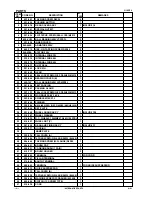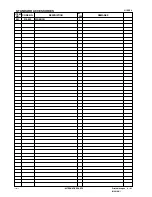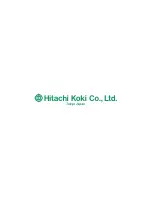
--- 5 ---
6-2. Comparisons in Torque vs. Rotation Speed and Stator Coil Temperature Rise
Figure 1 shows comparisons of the rotation speed and the stator coil temperature rise between a competitive
model with respect to torque. Torque represents the magnitude of load, i.e., the amount of pressing force, cutting
depth and forward force in actual cutting jobs. This shows that a powerful motor is less likely to burn out because
it has both a minimum drop of rotation speed even at a greater torque and a lower stator coil temperature rise at
the same torque.
Fig. 1 Comparisons in torque vs. rotation speed and stator coil temperature rise
Figure 1 indicates the followings:
The motor speed of the Model G 10SF3 is higher than that of C at the same torque. This means that the
working efficiency of the Model G 10SF3 is superior to C (Model G 10SF2 is also superior to C).
The stator coil temperature rise of the Model G 10SF3 is lower than the Model G 10SF2 thanks to the
improved cooling mechanism and it is equivalent to that of C. This means that the Model G 10SF3 has a burn-
resistant and tenacious motor.
Load
Stator coil temp
. r
ise (K)
2,000
0
C
4,000
6,000
8,000
12,000
10,000
0
0
600
100
200
300
400
500
Rotation speed of spindle (/min.)
X
X
X
C
Torque range
HITACHI G 10SF3
Stator coil temp. rise
X: Burn-out point
HITACHI G10SF2
HITACHI G 10SF2, G 10SF3
Rotation speed of spindle





















